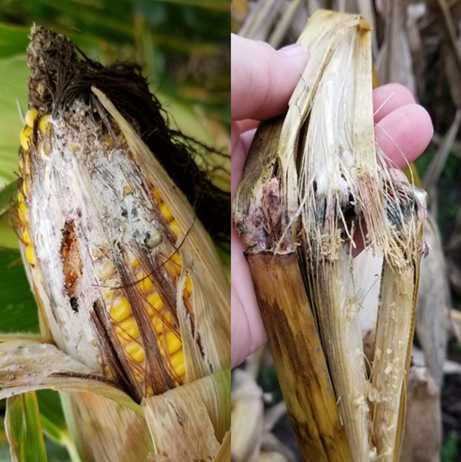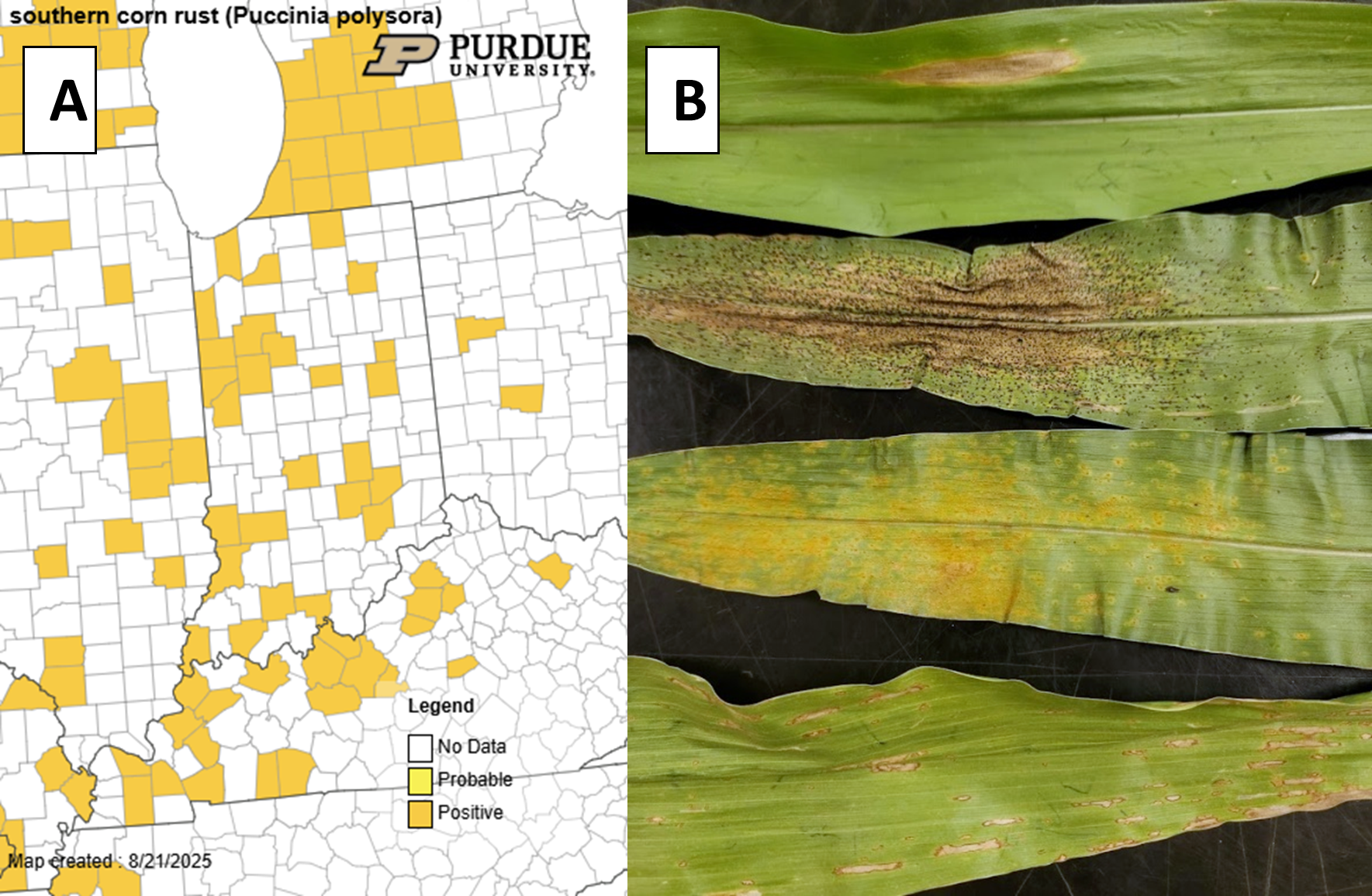
In Indiana, five ear rots can lead to mycotoxin production in corn.


In Indiana, five ear rots can lead to mycotoxin production in corn.

It is now time to evaluate fields for any stalk or ear rot symptoms. This will aid in making assessments about field harvest order and if there is a risk of mycotoxin contamination.

A number of foliar diseases have made an appearance in corn across Indiana.

Southern corn rust has now been confirmed in two counties (Knox and Warrick) and we are awaiting samples from Porter, Shelby, Bartholomew, Decatur, Jennings that are highly probable for this week in Indiana (Figure 1).

Red crown rot of soybean continues to be a concern this season in Indiana. We have our first reports for 2025 in fields that have had a previous history.

It is important to continue to scout for diseases in both corn and soybeans to make informed management decisions.

Most corn fields I have been in this week are pretty clean. A few diseases that I have seen include anthracnose, tar spot, and common rust in corn.

We are looking to track all corn and soybean diseases in Indiana – tar spot, southern rust, frogeye, red crown rot, and others.

Tar spot confirmed in our research plots in Indiana this week. Corn growth stages are quite variable across Indiana, but a number of areas with early planted corn are about knee high.
Fusarium graminearum is a globally distributed plant pathogen capable of causing plant diseases, Fusarium head blight of wheat and small grains and Gibberella ear rot of corn are two diseases found in Indiana that are caused by this plant pathogen.
© 2026 Purdue University | An equal access/equal opportunity university | Copyright Complaints | Maintained by Pest&Crop newsletter
If you have trouble accessing this page because of a disability, please contact Pest&Crop newsletter at luck@purdue.edu.